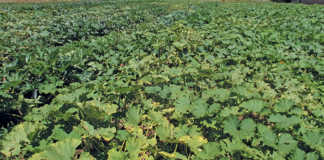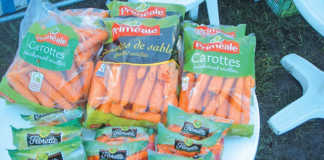
Photo: Bill Kerr
There are three types of garlic:
Softneck
This is the most popular type in South Africa. For storage at home, it can be braided and suspended from the beams in the garage or storeroom. Softneck garlic belongs to the Allium sativum species. There are two main varieties: Egyptian White/Pink. The bulbs consist of an outer layer of large cloves and two inner rows of smaller cloves. Normally, only the larger cloves are used for planting. The smaller ones will produce smaller bulbs.
This type has the strongest flavour and a good shelf life. It is sufficiently cold-tolerant for South Africa’s climate.
Stiffneck
Stiffneck garlic (A. sativum var. ophioscorodon) was virtually unknown in South Africa, but has recently begun appearing on shelves. It has a row of large cloves that grow around the stalk. I find the pink Tuscan variety the best in this class. The bulbs and cloves are particularly large and attractive. It is a highly cold-tolerant variety. Many new varieties appear on heirloom websites, but most are vastly inferior to the Tuscan and softneck varieties.
Elephant
Elephant garlic (A. ampeloprasum) is more closely related to leeks. It develops huge bulbs and cloves and has a longer shelf life than the other types. It also has a milder flavour, which suits many consumers. Elephant garlic produces only a few cloves and is less hardy than the other types. It is often incorrectly called ‘giant garlic’ in South Africa.
Chinese imports
Garlic is planted in February or March, with February being preferable, and is harvested between September and November, depending on the climate and variety.
Traditionally, garlic was cheap at harvest season and increased in price up to just before the next harvest. This price rise was justified by having to store the crop under the correct conditions.
Nowadays, however, much garlic is imported from China, which is by far the world’s largest garlic producer. Because China is counter-season to South Africa, the crop is now readily available here all year round. Imported garlic is supposed to be irradiated, which renders it unusable for planting purposes, but some does slip under the radar.
Most South African-grown garlic is produced in the warm, northern areas, where the climate tends to ensure larger yields and a slightly earlier crop.
Start small
If you buy garlic for production, it is important to establish the source, as it may not sprout due to being irradiated. In addition, ensure that the planting material appears clean and healthy so as not to introduce disease onto the land. There are a number of specialist suppliers of garlic for planting purposes.
Finally, start with a smaller quantity and increase the area planted to the crop from this. This is a safer and more economical approach.
Bill Kerr is a vegetable specialist and breeder.












